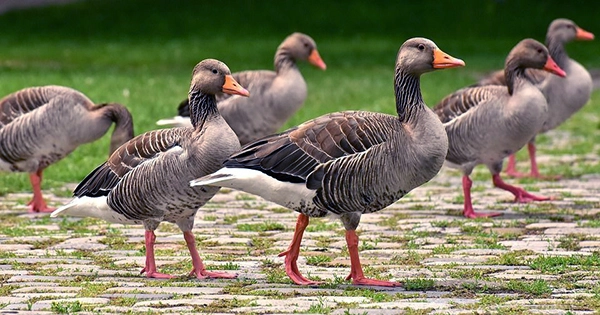An angry goose is such a formidable foe that they’re utilized as guard geese in some regions of the world to keep trespassers away from houses and farms. From afar, they may not appear to be the traditional attack animal, but one glimpse at their bizarre geese teeth will convince you otherwise. Do geese, on the other hand, have teeth? What are the materials used to make these barbed tongue additions, and what evolutionary benefit do they provide?
While these spiky barbs resemble teeth in appearance and function, the material they’re constructed of prevents them from being classified as teeth. “As bizarre as it may appear, geese do not have teeth in the traditional sense,” the RSPB’s Vanessa Amaral-Rogers told IFLScience. “Enamel is used to make teeth, and cartilage is used to make these spiky-looking structures, which are known as tomia (singular tomium).”

Conical papillae, or goose teeth, are distributed along the tongue and can cooperate with the bill to facilitate cutting. Some geese have barbs at the back of their tongues to prevent food from being regurgitated, which explains why turtles’ throats are also such a hellscape. The tomia, despite not having the enamel of actual teeth, pack a punch of their own. “The serrated protrusions are part of the beak and tongue, but they operate like conventional teeth,” Amaral-Rogers explained, “and they’re quite sharp!”
The tomia that line the tongue and beak aren’t genuine teeth, but they serve a similar purpose. “Geese eat a variety of challenging foods,” Amaral-Rogers remarked. “Having tomia on their tongue and beak aids them in ripping and pulling roots, stems, grasses, and aquatic plants from the earth.” Their tongue’s ‘teeth’ also aid in the capture of small mammals and insects.”
So, while this pair of fake gnashers is stunning, are other birds’ bills this ferocious? “These barbs are definitely observed in other bird species,” Amaral-Rogers stated. “The tongue shape of many animals has evolved as a result of convergent evolution and is linked to the species’ feeding habits. The tomia of ducks, geese, and swans (Anatidae) is similar, and it helps them retain and rip plants.”
“However, the tomia is not the same in all cases. Some fish-eating birds, for example, have spines that cover the whole length of their tongue, making it easier to grasp and hold squirming fish in place. Look at penguins and lorikeets for some other wonderful bird tongues — it puts the goose tongue into perspective!” That’s all there is to it, kids. Even though geese don’t have teeth, they can still cause you problems.















